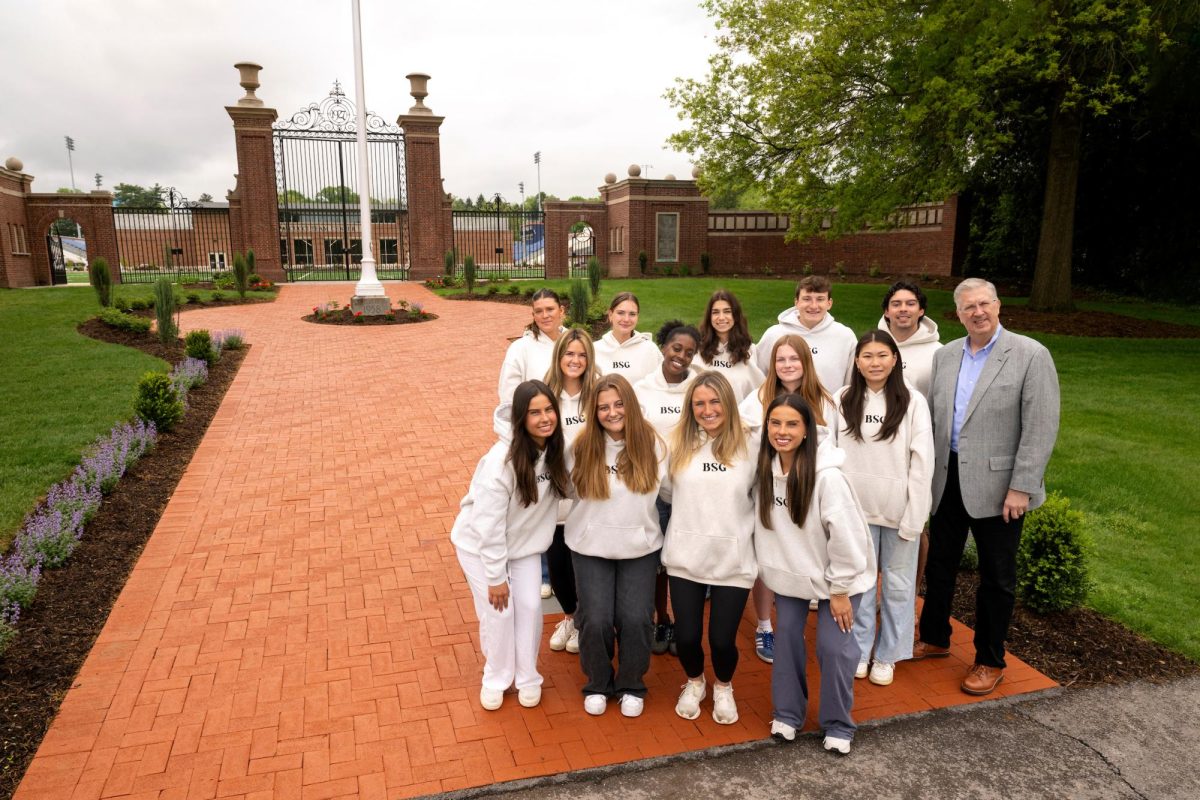Despite not being a big hiker, nor deeply religious, I walked a major portion of the Camino de Santiago as a class credit through Bucknell this summer. The Camino de Santiago is an ancient pilgrimage across Northern Spain to Santiago de Compostela, where the remains of Saint James the Apostle are said to lie. There are several routes that pilgrims take to reach Santiago de Compostela, the most popular route being 500 miles. Our group of 16 arrived in Roncesvalles, Spain on May 28th and began our journey to Santiago, and what a journey it was!
There, I attended my first pilgrims, mass and group dinner. The Camino can be whatever you want it to be; a profound spiritual journey, a social experience, or a personal achievement. However, there is no denying the fact that it truly is a social experience. On the Camino, I met people from all over the world and every person I talked to had an impact on me.
A French woman insisted on wearing wrist weights to tone her arms while walking. A Danish father and his twin sons stayed positive while walking 50km a day. The charismatic priest from the Donativo, or as we fondly referred to it, the Convent, in Pamplona persuaded me to read the evening meditation. And of course, my Camino favorites, Brad from Canada (currently residing in the Netherlands) and Monja, from Germany. Lastly, there was a mother from California who was coming back for redemption on the Camino after having skipped the Meseta the first time around. Admittedly, our group also skipped the Meseta, the long, flat middle portion, bussing from Logroño to Leon. All the more reason for me to return one day, though!
The Camino fosters connections and relationships between people. It’s not uncommon to hear about Camino love stories and lifelong friendships. There is this sense of “communitas” throughout the entire Camino. I shared my pain with total strangers. I also listened to different people’s entire life stories over the course of a few miles. You might have life-changing conversations some days, as I had with Monja in Pamplona and with Brad in Sarria, or some days you might just exchange a “buen camino” with other pilgrims. However significant the interaction, it is clear that everyone on the Camino is a part of this incredibly unique shared experience and community.
Many walk the Camino while in a transitional state in their lives. Perhaps they have just graduated, are looking for a new job or going through a divorce. Circumstances and background are almost irrelevant while on the Camino, though. They inform your reasons for tackling the Camino, but everyone is welcomed and treated exactly the same. The Camino de Santiago is traditionally a Catholic pilgrimage, but being Catholic, or even religious at all, is not a requirement. While on the Camino you are in a liminal state without outside distractions. Your only job is to follow the well-marked trail, punctuated by yellow arrows and granite pillars. It became clear to me why people become almost “addicted” to walking and return for their second, fifth or even tenth Camino. With few responsibilities, the Camino allows you the time and opportunity to solve whatever problem and maybe even “find yourself” along the way.
On the Camino, I averaged around 15 miles a day walking from town to town, traveling over 250 miles in total. Our group traversed the Camino Frances, the most popular route amongst pilgrims. Some days I walked alongside strangers, and most days with my peers where we treated those around us to acapella concerts of our own making, much to their surprise! However, I found that the most valuable part of the Camino happened when I walked by myself for 18 miles from Estella to Los Arcos. With no one but yourself, there’s no choice but to do lots of reconciliation and reflection. Though the Camino is very social, at its core, it is incredibly personal. I found that receiving the Compostela, or certificate of completion, in Santiago was certainly an honor, but honestly slightly underwhelming for how meaningful the entire experience was.
I endured 26 miles in the notorious Galician rain. I averaged around 4 hours of sleep a night due to horrendous snoring in different albergues (hostels). Our group was victim to a few different bed bug scares. On day three, I faced the fabled “wall” where the jetlag and soreness finally caught up, and finishing the Camino seemed impossible. There were very early mornings and unpredictable weather to be combatted. Despite every challenge, walking the Camino de Santiago has been one of the most impactful experiences of my life thus far. I hope to one day return to Northern Spain, and walk the entire Camino, Meseta and all!



















